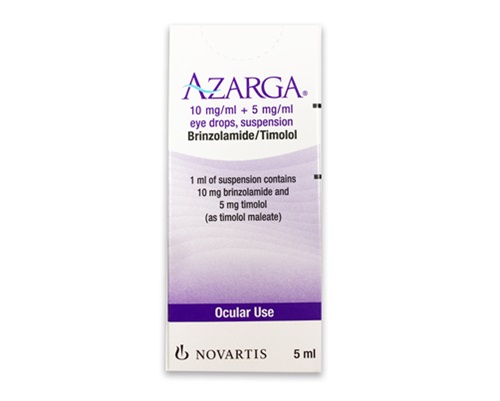Description
Trade name:
Nevanac
Compound:
Each 1 ml of suspension contains:
Nepafenac 1 mg
Auxiliary components:
benzalkonium chloride (as a 50% solution), carbomer (974P), tyloxapol, disodium edetate, mannitol, sodium chloride, sodium hydroxide and/or hydrochloric acid – to adjust pH, purified water.
Properties:
Nepafenac is a non-steroidal anti-inflammatory drug with analgesic action. When applied topically, nepafenac penetrates the cornea of the eye and under the influence of the hydrolase enzyme is converted into the active form – amfenac. Amfenac inhibits the action of cyclooxygenase (prostaglandin – H synthase), an enzyme necessary for the production of prostaglandins.
Clinical efficacy:
In clinical studies on the effectiveness of Nepafenac suspension in the prevention and treatment of postoperative pain and inflammation in patients after cataract surgery and in reducing the risk of postoperative macular edema in patients with diabetes who have undergone cataract surgery, its high effectiveness was established.
Indications:
– prevention and treatment of postoperative pain and inflammation after surgical removal of cataracts
– reducing the risk of postoperative macular edema associated with cataract surgery in diabetic patients.
Method of administration and dosage:
For topical ophthalmic use only.
Shake the bottle before use.
When using more than one topical ophthalmic drug, the interval between drug administrations should be at least 5 minutes.
Avoid touching the dropper tip of the bottle to your eyes or any other surface to avoid contamination of the dropper tip and the contents of the bottle.
After use, it is recommended to close the bottle tightly with the lid.
For the prevention and treatment of postoperative pain and inflammation, 1 drop of the drug is instilled into the conjunctival sac of the affected eye(s) 3 times a day, starting 1 day before cataract surgery and up to the 14th day of the postoperative period. 30-120 minutes before surgery, one more drop should be instilled.
Treatment may be extended up to 3 weeks (21 days) postoperatively, as prescribed by the doctor.
Children.
The safety and efficacy of Nevanac eye drops in patients under 18 years of age have not been studied and, therefore, the use of the drug in such patients is not recommended.
Contraindications:
Individual hypersensitivity to the active substance, any excipient or other non-steroidal anti-inflammatory drugs (NSAIDs).
Precautions:
Topical NSAIDs may cause keratitis. In some susceptible patients, long-term topical NSAID use may cause epithelial damage, corneal thinning, corneal erosion, corneal ulceration or corneal perforation. Such events may be vision-threatening. Patients who develop signs of corneal damage should immediately discontinue Nevanac and closely monitor their cornea.
Topical NSAIDs may slow or delay healing. Topical corticosteroids are also known to slow or delay healing. Concomitant topical NSAIDs and steroids may slow healing.
Side effects:
Uncommon: keratitis, punctate keratitis, corneal epithelial defect, allergic conjunctivitis, eye pain, foreign body sensation, lid margin peeling.
Rare: blurred vision, photophobia, dry eyes, blepharitis, eye irritation, itchy eyes, eye discharge, increased lacrimation.
Ophthalmic disorders:
corneal perforation, ulcerative keratitis, corneal thinning, corneal opacity, corneal scar, impaired healing (of the cornea), decreased visual acuity, ocular edema, ocular hyperemia.
Gastrointestinal disorders:
vomit
Research:
increased blood pressure.
Storage method:
At a temperature not exceeding 25 degrees. After opening, store no longer than 28 days.
Package:
The cardboard box contains a 5 ml dropper bottle and paper instructions.









